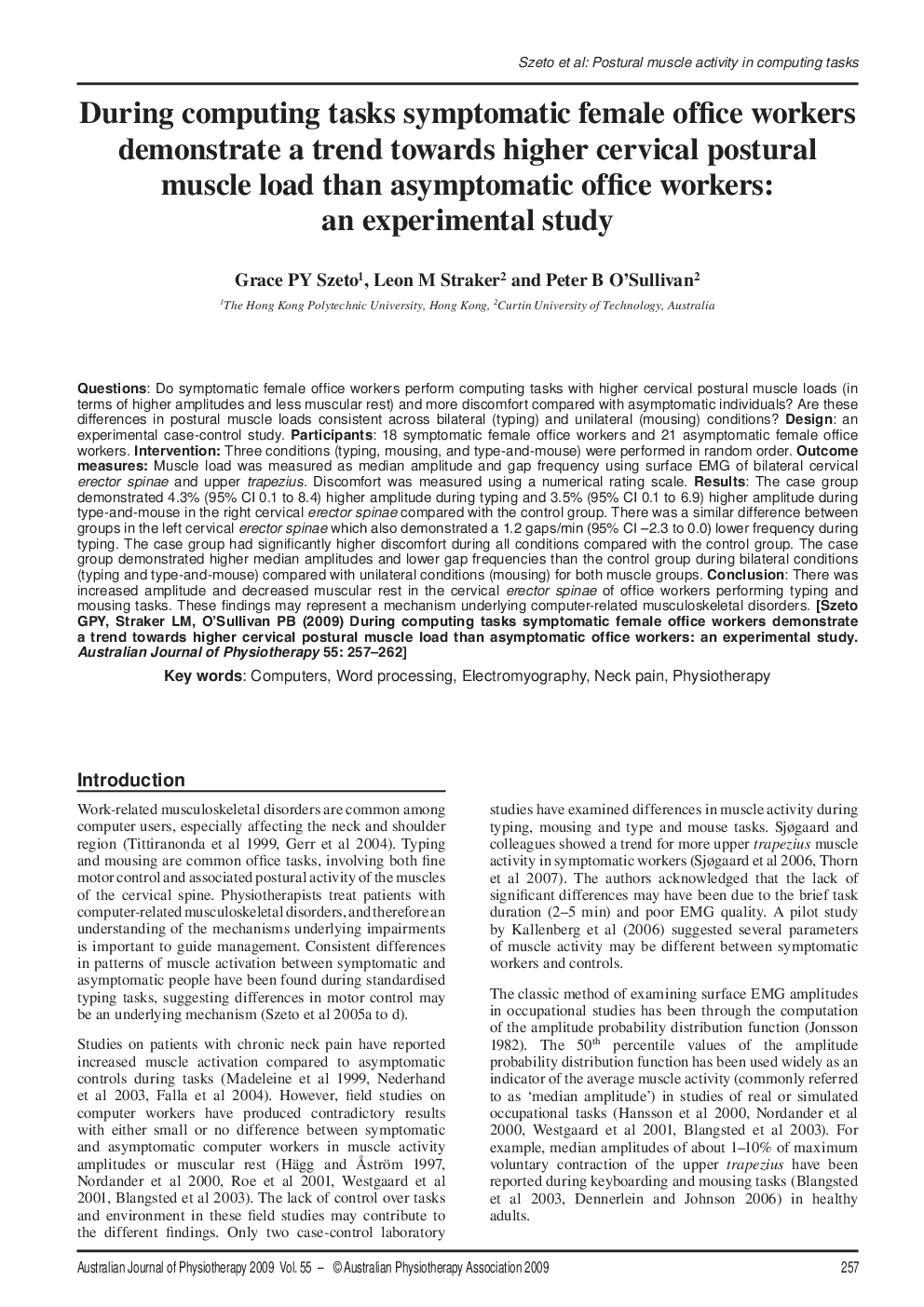| Article ID | Journal | Published Year | Pages | File Type |
|---|---|---|---|---|
| 2701331 | Australian Journal of Physiotherapy | 2009 | 6 Pages |
QuestionsDo symptomatic female office workers perform computing tasks with higher cervical postural muscle loads (in terms of higher amplitudes and less muscular rest) and more discomfort compared with asymptomatic individuals? Are these differences in postural muscle loads consistent across bilateral (typing) and unilateral (mousing) conditions?Designan experimental case-control study.Participants18 symptomatic female office workers and 21 asymptomatic female office workers.InterventionThree conditions (typing, mousing, and type-and-mouse) were performed in random order.Outcome measuresMuscle load was measured as median amplitude and gap frequency using surface EMG of bilateral cervical erector spinae and upper trapezius. Discomfort was measured using a numerical rating scale.ResultsThe case group demonstrated 4.3% (95% CI 0.1 to 8.4) higher amplitude during typing and 3.5% (95% CI 0.1 to 6.9) higher amplitude during type-and-mouse in the right cervical erector spinae compared with the control group. There was a similar difference between groups in the left cervical erector spinae which also demonstrated a 1.2 gaps/min (95% CI –2.3 to 0.0) lower frequency during typing. The case group had significantly higher discomfort during all conditions compared with the control group. The case group demonstrated higher median amplitudes and lower gap frequencies than the control group during bilateral conditions (typing and type-and-mouse) compared with unilateral conditions (mousing) for both muscle groups.ConclusionThere was increased amplitude and decreased muscular rest in the cervical erector spinae of office workers performing typing and mousing tasks. These findings may represent a mechanism underlying computer-related musculoskeletal disorders.
